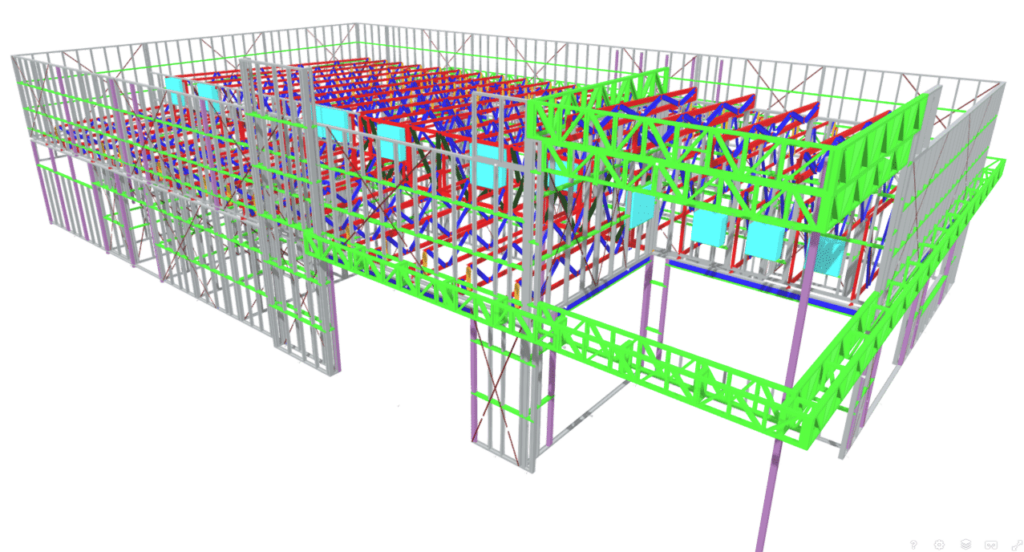Whether structural steel is required as supporting elements in a light gauge steel (LGS) frame solution depends on the specific design, load requirements, and the scale of the project. Here are the key considerations:
1. Load-Bearing Capacity:
- LGS Frames Alone: In many cases, LGS framing can support typical residential and light commercial loads on its own, especially for walls, floors, and roof systems. The LGS components are engineered to handle the structural loads they are designed for without needing additional support from structural steel.
- Structural Steel Required: For larger spans, heavier loads, or multi-story buildings, structural steel may be necessary to provide additional strength and support. This could include steel beams, columns, or other elements that are integrated with the LGS framing to ensure the overall stability of the structure.
2. Building Height and Size:
- Low-Rise Buildings: In low-rise buildings (e.g., one or two stories), LGS framing systems often do not require structural steel support. The LGS frame is typically sufficient to bear the loads.
- High-Rise Buildings: For taller or more complex structures, structural steel might be required to support the LGS framing, especially at critical points where additional strength is necessary, such as in load-bearing walls, roof trusses, or large open spaces.
3. Design Requirements:
- Hybrid Solutions: Sometimes, a hybrid approach is used, combining LGS framing with structural steel elements. This allows for the flexibility of LGS framing in conjunction with the strength and load-bearing capacity of structural steel in areas where it’s needed.
- Specific Design Loads: In structures that must support heavy equipment, large spans, or significant live loads, structural steel may be integrated to handle these specific challenges.
4. Local Building Codes and Regulations:
- Regulatory Requirements: Local building codes may dictate when structural steel is required, especially in regions prone to seismic activity, high winds, or heavy snow loads.
5. Architectural Considerations:
- Aesthetic and Functional Needs: Sometimes, structural steel is used not only for its load-bearing capacity but also for aesthetic reasons or to create large, open spaces without interior columns.
Conclusion:
While LGS frames can often stand alone in residential and light commercial projects, structural steel may be required in larger, more complex buildings or where additional load-bearing capacity is necessary. The decision to incorporate structural steel depends on the specific needs of the project, including design, load, and regulatory requirements.

